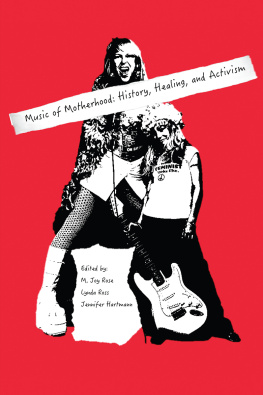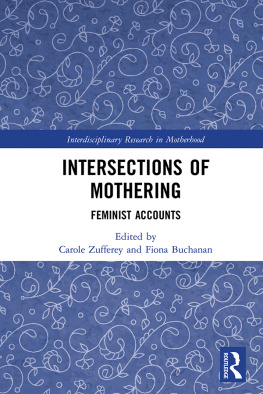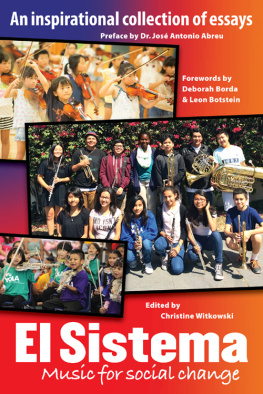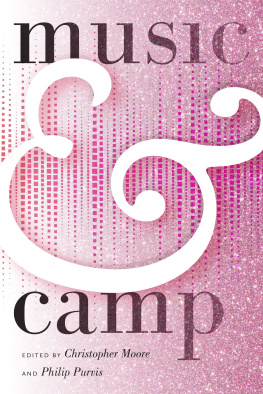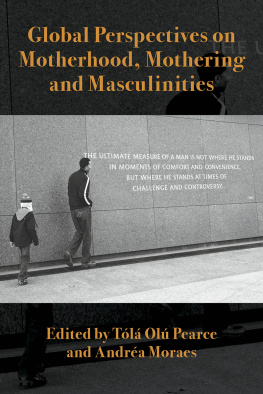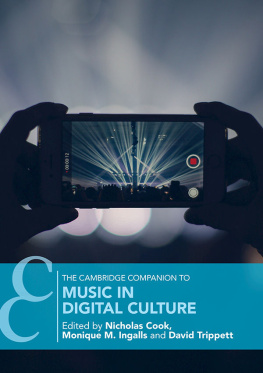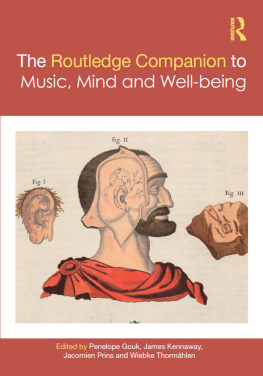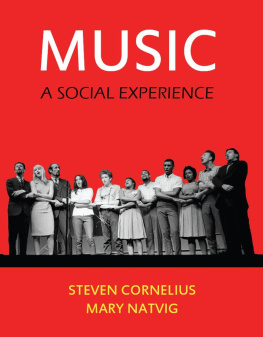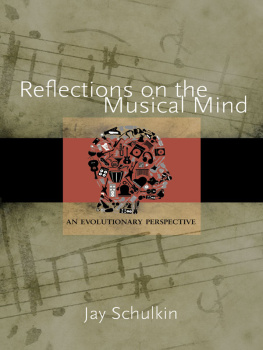Music of Motherhood
Copyright 2017 Demeter Press
Individual copyright to their work is retained by the authors. All rights reserved. No part of this book may be reproduced or transmitted in any form by any means without permission in writing from the publisher.

Funded by the Government of Canada
Financ par la gouvernement du Canada
Demeter Press
140 Holland Street West
P. O. Box 13022
Bradford, ON L3Z 2Y5
Tel: (905) 775-9089
Email:
Website: www.demeterpress.org
Demeter Press logo based on the sculpture Demeter by Maria-Luise Bodirsky, www.keramik-atelier.bodirsky.de
Printed and Bound in Canada
Front cover photograph: James J. Kriegsmann Jr., Martha Joy Rose and Zena Rose Marpet.
eBook: tikaebooks.com
Library and Archives Canada Cataloguing in Publication
Music of motherhood : history, healing, and activism / co-editors, M. Joy Rose, Lynda Ross, Jennifer Hartmann.
Includes bibliographical references.
ISBN 978-1-77258-134-8 (softcover)
1. Mothers. 2. Motherhood. 3. Women musicians. 4. Music--Social aspects. I. Rose, M. Joy, 1957-, editor II. Ross, Lynda Rachelle, 1950-, editor III. Hartmann, Jennifer, 1984-, editor
HQ759.M97 2017 306.8743 C2017-906871-7
Music of Motherhood
History, Healing, and Activism
EDITED BY
M. Joy Rose, Lynda Ross, and Jennifer Hartmann

DEMETER PRESS
To the women of Mamapalooza
and all moms who rock!
Table of Contents
Acknowledgements
We would like to thank all of the authors who contributed to this collection; Demeter Press; and each of the anonymous reviewers for their valuable input, work, and commitment to this project.
Overview
In the late nineties, a small group of women in America began writing songs and singing lyrics about what it was like to be a mother. This movement spread to four countries and twenty-five cities before becoming a major contributor to what we now know as mom rock. But in addition to creating branding around mom-made art, music throughout history has been a medium for healing, activism, as well as identity seeking. This book tackles each of these subjects from an academic as well as a personal perspective, and sheds light on not only the power of music, but its ability to transform.
1.
Introducing the Collection
JENNIFER HARTMANN, LYNDA ROSS, AND M. JOY ROSE
Here I am, in a cold, stark public hospital, waiting to meet the childa child Ive carried for forty weeks and four days, but for whom Ive really waited twenty-six years. The waiting is not mere sitting around in boredom. Its punctuated by a crippling wave of physical and mental reactions to the profound event happening inside my body. Some reactions are expected, like the oddity of overwhelming excitement combined with blinding waves of pain. Some are not. A fear that I had not previously imagined almost immobilizes me at times; it sometimes feels as if my mind hurts me more than my body. When the pains began at four in the morning, I took a long shower, all the while reminding myself about my plans to deliver this baby as naturally as possible. I would stay home, labouring peacefully and naturally until my body told me it was time to go. Only then would I proceed to the hospital to deliver the baby in what I had considered the safest environment.
But is there such a thing as a peaceful labour? Can the word natural even cross a persons lips when her body feels as if it is being ripped from the inside out? At some indistinct point during the day, my plans for a natural birth began to seem ill-advised and naive to my labour-addled brain. My body had other plans, too, or so it would seem. I proceeded to the hospital as soon as my water unexpectedly broke in the early afternoon on my landlords doorstep. Now, over twelve hours later, Im only two centimetres dilated, and the fear and pain are starting to get the best of me. I had thought Id be blissfully holding my newborn daughter by now! What if I cant handle this? What if something horrible happens to this creature Ive never met, but love so much? What if Im going to be a terrible mother? At this moment, all I want to do is crawl into my own mothers lap and cry. I breathe and try to forget. My husband smiles through the fear in his own eyes and encourages me to take our thousandth walk up and down the maternity ward hall. We talk about mundane things as we walk. As the pain envelops my body again, my end of the conversation ceases. He begins to time my contraction on his iPhone. I relax my knees and vocalize gently, trying with all my mental might to embrace this immobilizing pressure as the mysterious, feminine force that would allow my baby to finally emerge from my body. With my arms thrust around my husband s neck, I recall the rhythmic, meditative music of the bellydance classes I had been taking throughout my pregnancy, and begin to circle my hips slowly; the circles become wider as the pain becomes more intense, then become figure eights. He mimics my motions; I dont know whether he does this to support me or to calm his own mind. The pain tries to seize me, but for now, it reaches a barely tolerable peak and settles. Is it over? he asks in a low voice. Yes, I say, and he continues to hold me as he stops the timer. One minute long, five minutes apart, he says. That was a bad one. I know, I say, but it hurts less when I dance ... its like.... I struggle for the appropriate words. its like Im removing myself from the pain enough to let gravity do its work.
Jennifer Hartmann
HARTMANNS PERSONAL REFLECTIONS
The passage above is based on my labour experience with my oldest daughter, who came into the world in June 2011. The type of undulating hip movement I describe above had become almost instinctual for me; I had danced through my entire pregnancy, even performing in my studio recital when I was a mere six weeks from delivering. Bellydancing while pregnant and labouring was empowering; for the first time, I felt like my body should be on display because of the beautiful thing it was doing. The movement was natural, serene, focused. I found that the music to which I dancedwildly dissimilar from the music I perform as a classically trained violist and liturgical vocalistencouraged me to engage a different part of my brain. It stirred up the desire, and even the need , to keep my knees unlocked and open, my torso and hips moving, and my muscles relaxed. Not only was this instinctual for me (as well as the several mothers I interviewed for this project), but birth professionals often encourage this type of motion and stance because they can promote the normal progression of labour and assist in pain relief. Bellydancing, specifically, is commonly referenced in both vernacular and official holistic birthing literature, and is used often as a means for mentally and physically preparing for birth.
My experience as a mother who bellydanced through pregnancy and labour is only one facet of my own experiences relating to music and motherhood. As a professional musician, music manager, and ethnomusicologist, how motherhood relates to music has consistently struck me as something hugely important to everyday life, but has been left understudied. My own motherhood has been punctuated by musical interludes: I began by singing and dancing through pregnancy and childbirth. I have faced challenges with being a working musician during pregnancy and early motherhoodchallenges that range from the very silly (trying to maintain a straight face during a symphony concert while my daughter rolls over in my belly during a soloists cadenza) to the incredibly taxing (struggling to find last-minute substitutes for gigs when my children become ill). I have invented and sung lullabies for my children. I have taught them to sing in our church choir and to hold and attempt to play 1/16-size violins. I have spent my rehearsal breaks and concert intermissions nursing babies. I have played my instruments to my childrens excited preschool classmates. I have spent many late nights scheduling interviews for my research and poring over detailed music scholarship, only to be interrupted by a distressed child crying for a comforting hug after being awoken by a nightmare.

